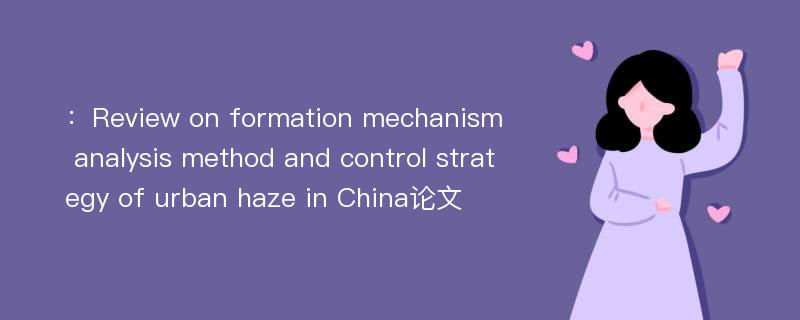
本文主要研究内容
作者(2019)在《Review on formation mechanism analysis method and control strategy of urban haze in China》一文中研究指出:Due to the rapid urbanization and industrialization, and excessive consumption of fossil fuel, haze weather characterized by PM2.5 has become a severe pollution problem in major Chinese cities recently, which has harmful effect on the air quality, visibility, clime system and human health. To indicate suitable directions for the prevention and control of haze pollution, the pollutant source apportionment and formation mechanism of urban haze should be figured out firstly. In this work, we briefly review the frequently-used methods for PM2.5 source apportionment and formation mechanism analysis of urban haze based on normal perspective in recent years. Furthermore, based on the new perspective of systematic methodology, the utilization of fault tree approach for the causation mechanism analysis of urban haze is significantly introduced and discussed. Finally, the recent progress on controlling strategies of urban haze in China is also synoptically introduced and discussed. It is expected that more effective tool/method can be found, developed and employed for the causation mechanism analysis and risk management of urban haze in China.
Abstract
Due to the rapid urbanization and industrialization, and excessive consumption of fossil fuel, haze weather characterized by PM2.5 has become a severe pollution problem in major Chinese cities recently, which has harmful effect on the air quality, visibility, clime system and human health. To indicate suitable directions for the prevention and control of haze pollution, the pollutant source apportionment and formation mechanism of urban haze should be figured out firstly. In this work, we briefly review the frequently-used methods for PM2.5 source apportionment and formation mechanism analysis of urban haze based on normal perspective in recent years. Furthermore, based on the new perspective of systematic methodology, the utilization of fault tree approach for the causation mechanism analysis of urban haze is significantly introduced and discussed. Finally, the recent progress on controlling strategies of urban haze in China is also synoptically introduced and discussed. It is expected that more effective tool/method can be found, developed and employed for the causation mechanism analysis and risk management of urban haze in China.
论文参考文献
论文详细介绍
论文作者分别是来自Chinese Journal of Chemical Engineering的,发表于刊物Chinese Journal of Chemical Engineering2019年07期论文,是一篇关于,Chinese Journal of Chemical Engineering2019年07期论文的文章。本文可供学术参考使用,各位学者可以免费参考阅读下载,文章观点不代表本站观点,资料来自Chinese Journal of Chemical Engineering2019年07期论文网站,若本站收录的文献无意侵犯了您的著作版权,请联系我们删除。
